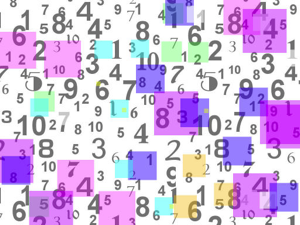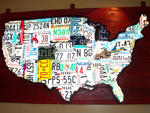 In any demonstration where you show the powers of the mind, it's all too easy to appear as a show-off, and create animosity in your audience. How do you engage your audience, instead of having them resent you as being a know-it-all?
In any demonstration where you show the powers of the mind, it's all too easy to appear as a show-off, and create animosity in your audience. How do you engage your audience, instead of having them resent you as being a know-it-all?
One of the most common ways is used, appropriately, when the memory demonstration is being used to promote a course or other memory product. It's the simple attitude of, “You can do this, too!” Basically, you're grabbing their interest by providing hope that their mind can be just as powerful as the demonstration they've seen you do.
To give you an idea of how effective this can be, check out the following memory infomercial introduction. It's a good demonstration of a proper set-up, as it begins with everyday people taking about how an improved memory bettered their lives, and only in the last seconds does it even mention an amazing memory demonstration (recalling the names of everyone in a studio audience):
This is great if you're teaching people to improve their memory, but what if you're doing a theatrical performance? You want this to seem impressive, yet without appearing as a show-off.
There's one theatrical technique that comes in very handy here, known as “distancing”. This is simply a technical term for presenting a piece as if someone else were responsible for what happens. Magician David Copperfield used this very effectively in a card routine on one of his specials.
Back in the 1940s and 50s, there was a Magistrate by the name of Canuto who brought in extra money by performing talks that included memory demonstrations. His angle for removing the audience antagonism was to explain that bookmakers could only be effectively prosecuted with betting slips found on his person. He continued to explain that the smarter bookies would develop their memories so as not to be caught with evidence.
From the audience's point of view, Magistrate Canuto wasn't showing off his own memory skills, but simply showing what is possible by clever bookmakers, and the fascinating things that can make a magistrate's job even tougher. Interestingly, by performing an impressive memory feat, such as remembering 20-30 items in and out of order, and then asking the audience to imagine a bookie that can do that with thousands of accounts, he can take the edge off even further while still astounding the audience.
Another related, yet distinct, method of distancing is to credit an inanimate object with powers or feelings that people know it can't possess. This is known in psychology as a “metaphor restriction violation”, or a “Selectional Restriction Violation”.
When presenting this in a theatrical setting, the audience understands that the object can't really do what the performer is saying, so the audience themselves figures out that the performer is properly credited with the ability. Note how different this mental attitude is compared to a performer who states outright that you should take what you see as proof of his greatness.
In memory acts, this is often done by crediting some substance that gives anyone an incredible memory. Performer Jack Kent Tillar, for example, is known for his Memory Pill Act, which is just like it sounds: A pill gives anyone who swallows it great powers.
Another amusing take on this approach is Pit Hartling's amusing memory routine in which he credits orange juice for his remarkable memory.
There's nothing saying these approaches have to be distinct. Take Dr. Wilson's Memory Elixir, for example. Paul Szauter performs as Dr. Wilson, and old-time medicine pitchman. Already, he's created distancing by performing as a character from another era, and an literal snake oil saleman at that. The audience quickly figures out that such a character shouldn't be taken too seriously.
On top of that, it's the amazing elixir that is the claimed cause of the amazing memory feats. Not only does the audience see through this claim and credit the performer with an amazing memory, just as with Canuto's bookie presentation, but the audience gets the satisfaction of seeing through the pitchman's scam, as well!
This MP3 clip of Dr. Wilson's show will give you an idea of just how effective this can be. Notice that, at the end of the clip, he even brings it around on the audience by pointing out that unusual feats help remind people that they can and should remember what's important to them, and to focus on those things.
This is hardly an exhaustive list of approaches for engaging people with mind feats. As a matter of fact, I discuss other approaches used in magic performance in my Understanding Magic essay.
My main goal here is to start you out thinking about how to better present your mental feats, even if it's just for friends and family.



 I've posted a new tutorial over at the
I've posted a new tutorial over at the 

 (
(





